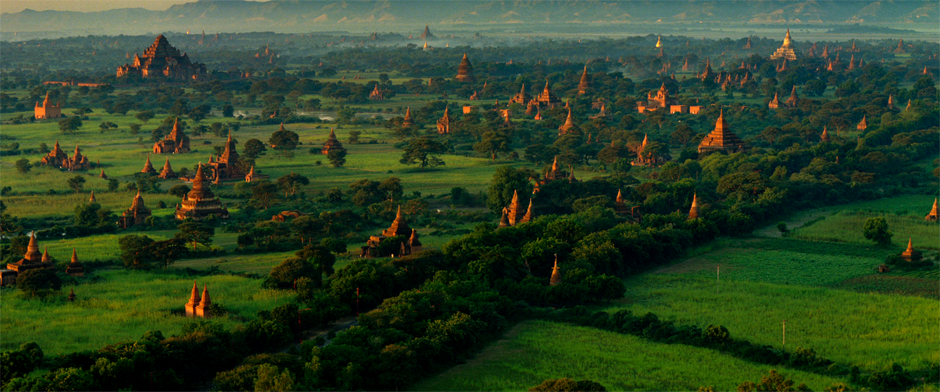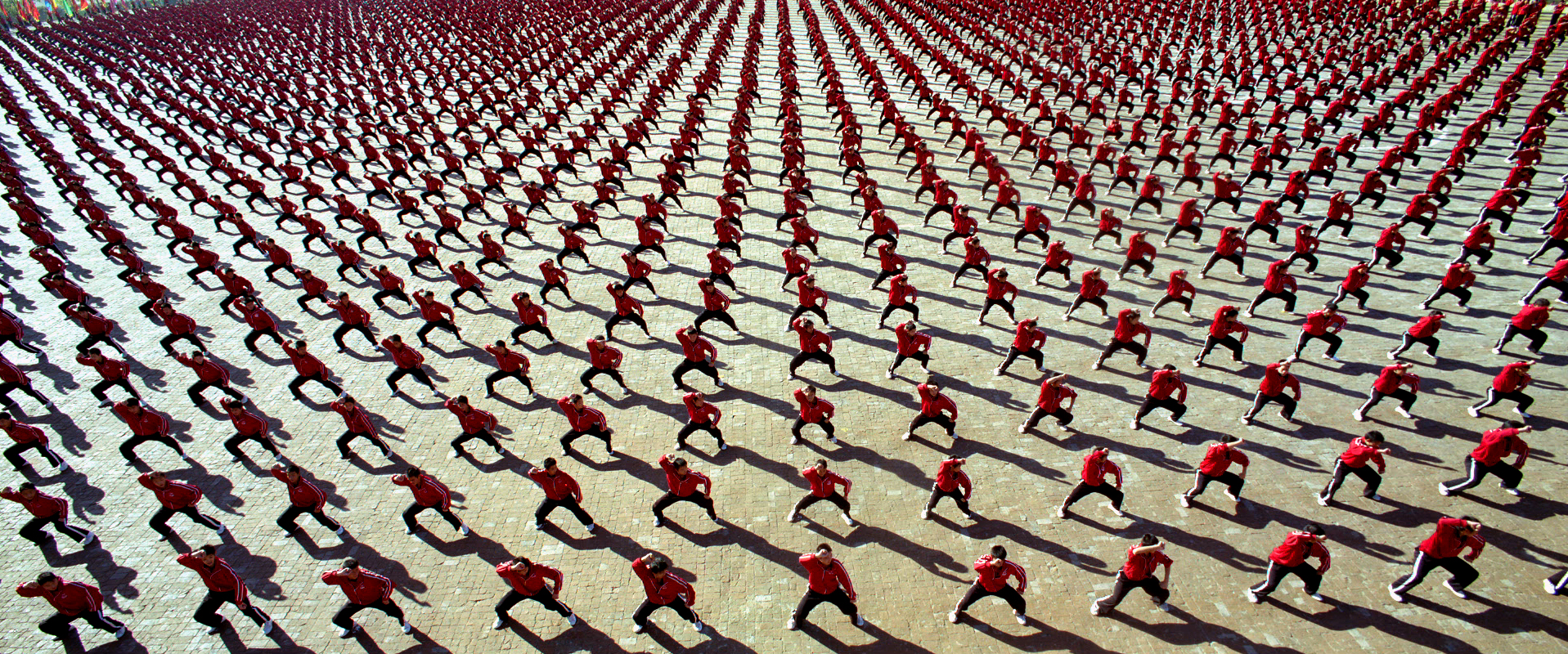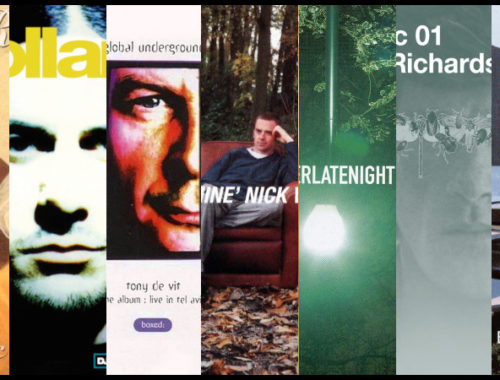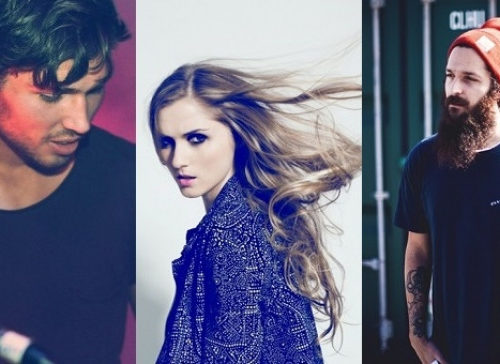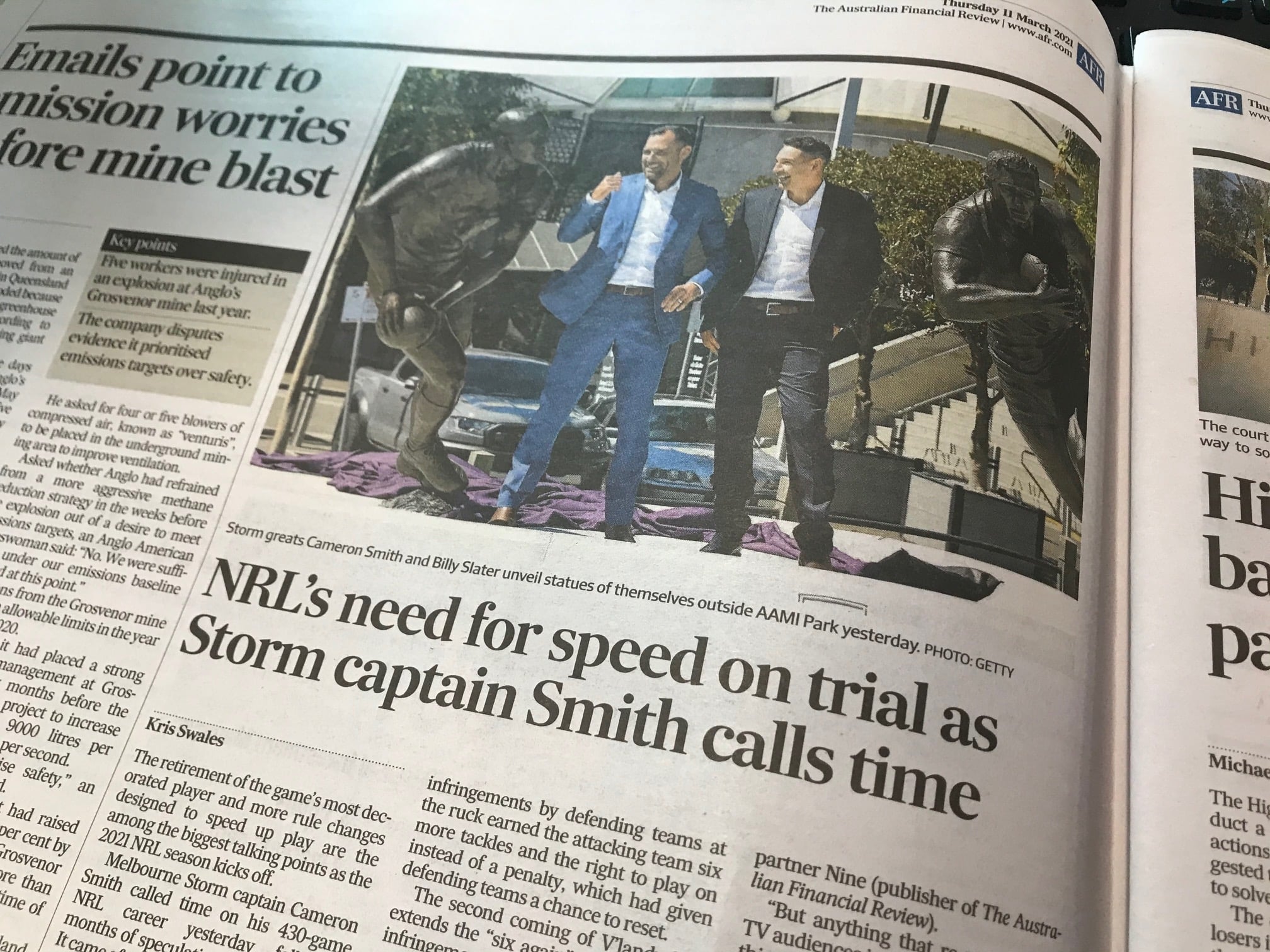Many moons ago, as a (very) wide-eyed teenager, I wandered into my house in an LSD-addled state one morning to be confronted with possibly the most mesmerising image I’ve ever seen on my television screen courtesy of Rage – a wide angle shot of what looked like volcanoes from another planet, which opened the music video to Yulunga by Dead Can Dance.
It looked a lot like the below…
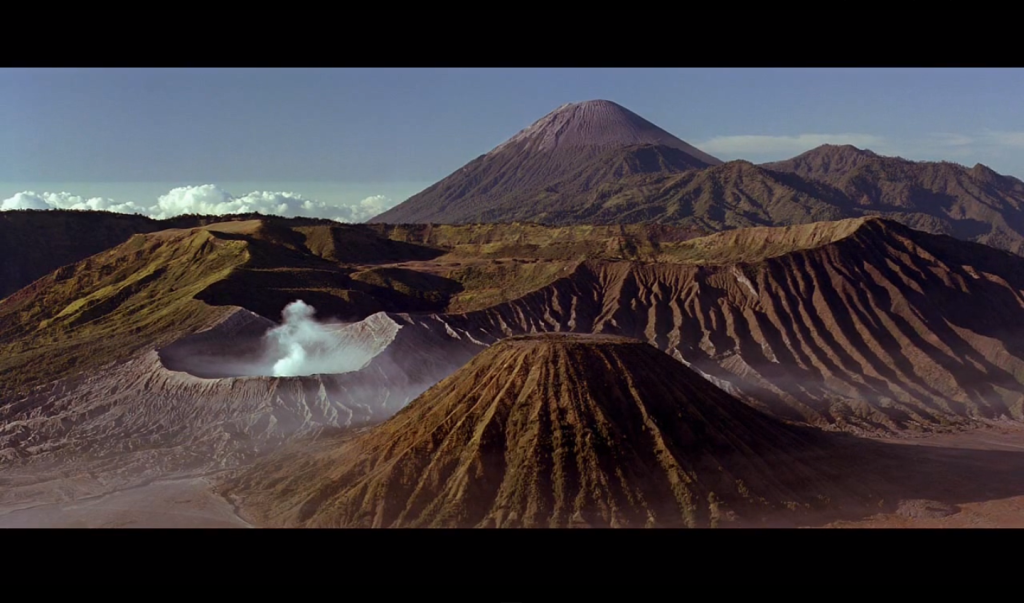
A year or two later, in my local video store, I was to discover that the footage from that clip was from the film Baraka. Years after that, after many repeated viewings, this scene put an end to my chicken eating career. Some 18 years after that fateful morning, and 20 years since Baraka was released, we were blessed with the sequel – Samsara – and I got to pick the brains of Mark Magidson, co-producer/editor/conceptual mind behind both films.
Below is the full transcript of the interview, which ran in part on theMusic.com.au and the associated street press magazines. We never did quite get around to discussing LSD use amongst teens in regional Australia…
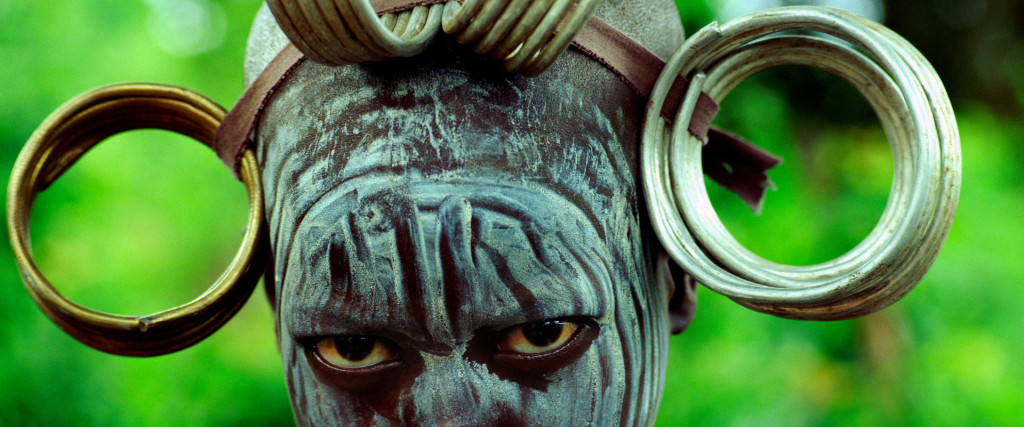
Hello Mark, where are you today and what’s been occupying your day?
“I’m in Los Angeles and it’s about 5:38 in the afternoon. I had basically a full day, there’s still a lot going on with Samsara – even though it’s been completed for a while there’s a lot of things, a lot of moving parts. We’re getting the film distributed in other parts of the world which is a good thing, but some of the territories we’ve waited on for a little bit for various reasons.”
Well you’ve made us wait a little bit for it down here but I did get to see it the other night. Thank you for another beautiful film – do you have enough distance from it now to appreciate the achievement of it without associating it with the process of getting it made?
“Oh sure, I’m really happy with the film. It’s a lot of work, it’s very gratifying, there’s a lot of things you go through to make a film like this. It is something that, it’s important you feel good about the work at the end hopefully! And it’s been nice to reconnect with some of the same people, with [director] Ron [Fricke] and [composers] Lisa Gerrard and Michael Stearns and some of the people that I’ve known for so many years.”
Obviously there’s a lot of magic on screen – do you feel that magic while you’re shooting? I’d imagine after your 25th country of lugging flight cases around, you’d be tempted to lock off the shot and get out of there.
“Well I think that we never would make compromises, but it is a process. I think personally when I made Baraka with Ron 20 years ago, I maybe took in the location experience a little more this time. It was really about what’s going on the negative, you know, really focused on what we’re bringing back for the film. And there’s a lot more locations in this film, so we stay out longer, there’s a longer production process, there’s a lot of reasons for that.”
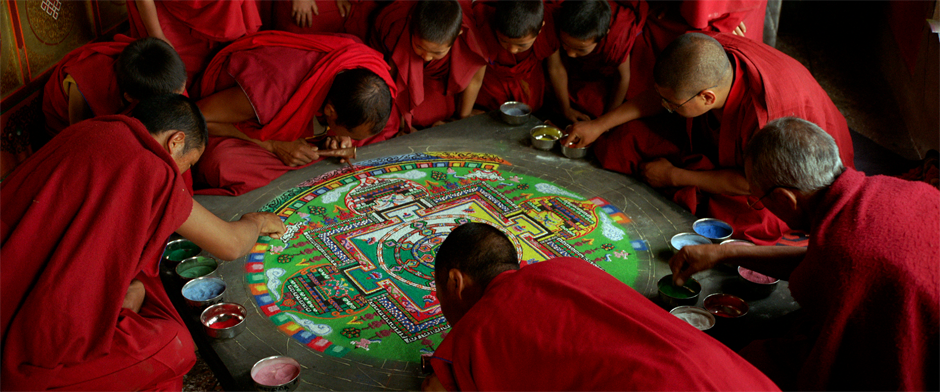
Can you talk us through the stages of the five years of production? From conceptualising to shooting to editing and so on.
“Sure. I think you start off with the concept which is the lead title Samsara, which is a Tibetan Sanskrit word that means ‘birth, death, and rebirth’ – or another word would be ‘impermanence’ – which is kind of what directs the research, the imagery to specific locations. We’re trying to find material, find shooting locations that lead to the concept and the themes, but that are also highly visual. So we’re kind of up against, to some extent, the fact that the audiences have seen a lot more with the Internet – people have seen a lot of amazing imagery, so it’s a high bar. When you’re choosing a location or locations that you would say ‘we’re going to bring our crew, we want to bring our crew here and film this’, it’s a pretty high bar of criteria for saying ‘yeah, we’ll pull the trigger on this place’.
“So you go through that ahead of time, that’s the kind of conceptualising and the research component. So concurrently with that we’re assembling the equipment package. There’s two camera systems: one is the Panavision camera system that we rented which is shooting at traditional frame rates, and then there’s the time-lapse camera system which Ron Fricke designed. Then we had a custom software program written for it that allows us to do all the camera moves in time-lapse – all the pans, tilts and dollies and so forth. It’s been refined since the Baraka days so it’s a lot more compact and a lot easier to set up and quicker 20 years later.
“So that goes on and you design location shoots. From experience you try to keep crews out for only six weeks let’s say, maybe seven weeks at a time – everybody gets pretty burnt out. So you come back for a couple of weeks and review the material, and work on the next shoot – maybe while we’re out the production coordinator back at home is working on the next trip. And so you kind of line up these different shoots and that’s the process.
“At some point you kind of just evaluate and say, ‘alright, we’ve got enough material to maybe start trying to edit this together’. So we undertook that and had planned on doing a couple of pick-up shoots halfway into the editing process just to fill in potential blanks of material that might be missing and material that need more of. We’ve got the material broken down into categories – organic images of nature or people praying or manufacturing images, performance art… you know, there’s several performance pieces. There’s the three Bali girls at the beginning, there’s the prison dance, there’s the guy that puts the clay on his face, we were looking for performance pieces. So those were the kind of categories of material that we were researching and trying to work into the film.”

Was Samsara an easier shoot than Baraka, in that had you made mistakes last time around that you didn’t make this time? Or was it so long between shoots that you’d forgotten a lot of the finer details?
“The answer to that question is both. It’s easier and harder. It’s harder to move equipment and film around – it’s a lot harder to move film negative in and out of countries due to the [security] x-ray. You can’t take it with you any more like we could with Baraka, and in a post 9/11 world it’s much harder to shoot with film. On the other side of that I would say in general, the food and accommodations are better everywhere you go for the most part. Not quite everywhere, but most places it was generally a little better than when we did Baraka.”
Did you shoot with the same stripped back film crew? Watching the behind the scenes of Baraka, it amazed me that there were so few of you when you see such amazing images on screen.
“Yeah, absolutely. It’s only four or five people on the crew. It’s really a process that for our kind of film making is very efficient – it’s the smaller the crew, the longer we can stay out [on location] within the budget, the more locations we can go to. So everybody has to multitask, everybody has to wear different hats, and we all did that. It’s a pretty tight bunch. We’re working with local production companies wherever we go that have access in advance to the shooting locations, and it’s just a process from the experience we have about how to do this kind of film making.”
And what’s the working dynamic like between yourself and Ron? You both conceptualise, but looking at the images on screen he’s got such an amazing eye – do you just get to a location and let him loose?
“Oh sure, yeah. He’s one of the best cinematographers in the world I think and he has an amazing ability to feel the essence of a place and how to bring back that essence on the negative. This is the third film we’ve done in 70mm and I think he’s gotten better at it. And we have more refined tools as well – technology.”
The impression I got from watching Samsara that I guess seemed a little different from Baraka – the camera was much more of an ‘observer’ in that film, but this film I feel like the camera is much more of a part of the action. And there was also a sense of humour in there that wasn’t in the last one as well.
“In moments, yeah. I don’t know about when you say ‘more involved’ – that’s an observation that you might be quite right about, I hadn’t thought of it that way. There is an approach to the ‘portraits’ in this film that’s similar, but it isn’t about trying to present a strong point of view. It’s really just ‘look at the camera and don’t blink’, it’s really minimal direction – we’re really just trying to capture the essence, just like still photograph. What was the other part of your question?”
Sense of humour.
“Oh yes, I think that’s probably for non-verbal film making the hardest emotion to pull off. I think we got there a bit with the fantasy coffins in Ghana, so there’s some of that, but it’s elusive for this kind of film making.”
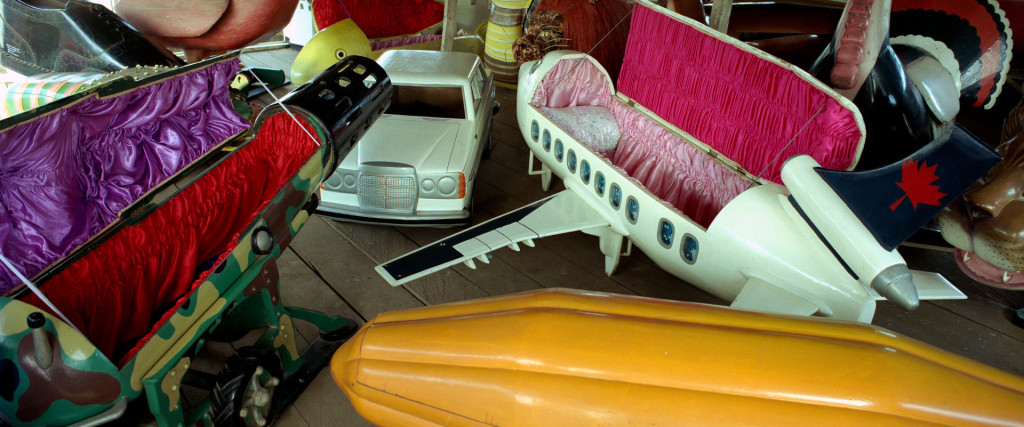
I also felt that the images and the music interacted a lot more this time around, so I was really interested to read that the music came well after the images rather than cutting to music which is traditional.
“Right, right. Letting the film be structured in the edit, you’re just really letting the images dictate how they were going to flow together without any sound. It’s a little severe, and it takes a little bit of getting used to, but it really made the edit very efficient I think. I think breaking up the music in sequences… because we had edited it in blocks, like blocks of organic images, the manufacturing sequence, the subway sequence, those are three to four or five minute sequences that are edited. We were able to break those up and give to the composers as separate little pieces. What’s good about that is they’re able to lay those out on their music software programs and they can compose a four minute piece of music that has an arc, so really they’re interpreting the arc of the edit. The edited sequence has kind of an arc, a little parable or a little story that’s being told in the edit, and the music does as well. So you end up with a real piece of music rather than where you’re scoring cut to cut. That also leaves the viewers a little more space to feel what they bring to the experience as well because you’re not micro-managing the emotions as you do in a conventional film with dialogue.”
I felt in Baraka that the scene where the music and the imagery worked so closely together was when the chicks were getting prepare for life as a battery hen. After that sequence, I gave up eating chicken – and in Samsara, there were people audibly groaning in the audience when you went into the abattoir and the battery farming there. I suspect it’s going to have a similar effect on milk consumption and Burger King.
“Okay, alright, I don’t know.”
You say you’re shying away from making any statements, but there’s some pretty strong imagery there.
“True. There’s a lot more disturbing type imagery in this film than there was in Baraka. Between those types of scenes – I mean, the chicks scene in Baraka a lot of people were very disturbed by, but we’ve got the sex dolls, the walls around religions that we see in Israel. So there’s some disturbing imagery in this film but we don’t want to make a statement about good or bad, or right or wrong, because we don’t want to bring the film into a place where the flow of the imagery is interrupted by a point of view that’s a political point of view. Even though you could say that there is a… there are some political… how would you say it……. Content that is brought along with the image and the choice of image that we’re making, but we’re not trying to take it too far. We’re trying to walk a line down the middle of not bringing it into a… we really want to not turn people into something where they say that they agree or disagree with the points that the filmmakers are making, because that takes you out of the experience that we’re trying to provide, which is more of an inner journey.”
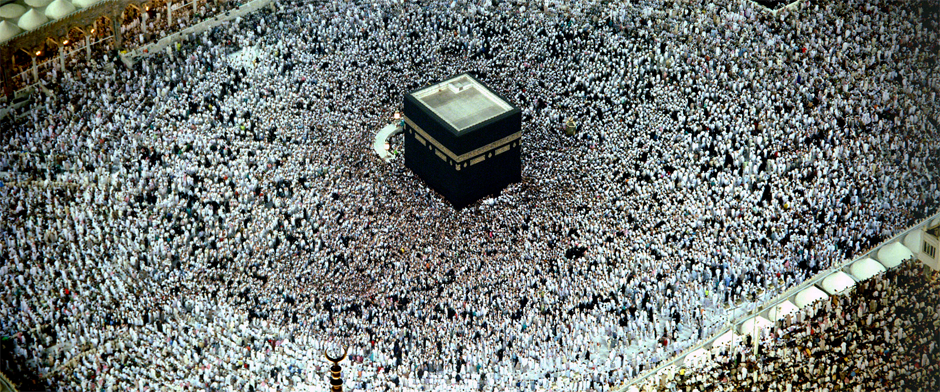
And I think it can mean different things to different people at different times – even watching Baraka years later, I get different things out of it than when I discovered it.
“Right, right. And I think that’s hopefully why the film has a long life, and people will hopefully watch it more than one time, ‘cause there’s really a lot there. Samsara is really dense, there’s a tremendous amount of subject matter – more edits, more locations, and there’s a lot to take in. And you see it more when you see it again. There’s more connections and so forth.”
The non-verbal aspect of it makes it more universal in a way but I was wondering if you’d ever – it’s probably logistically impossible – but if people who you’d shot in Baraka for instance, or in this, if you’d taken the film back to them and showed them. In Samsara for instance, the lady in the African village with her kid, then it cuts to the Los Angeles time-lapse over the freeways – do you think they would understand what they’re seeing?
“I think so. One of the really nice things about this is that it’s kind of universal – it’s music and image and it doesn’t need to be translated into any language and I think everyone’s feelings about it are valid. We’re really trying to provide an experience that allows people to feel a connection to the life experience to their own humanity – we’re all related and connected to each other. If you have that experience, regardless of how, that’s a positive outcome for us as filmmakers.”
In the production notes, Ron sounds a little more enthusiastic about going out on the road again than you do.
“Right, right! [laughs]”
Has your opinion changed yet?
“I’m not unenthusiastic, I’m just not enthusiastic, and you have to be really enthusiastic to want to take that kind of time and effort. Four-and-a-half years on a film and you watch it in 100 minutes and sometimes you question – ‘what are you doing?’ But you know I’m very proud of the film and really happy with the end result, but life’s all about choices. It’s hard to stack these things up back-to-back-to-back for me. And they’ve been really rewarding experiences on many levels, because relationships for example – the relationships that we’ve all made that we’ve worked on the film with people we’ve met in all parts of the world are really a wonderful take away as a side benefit of all this. Still keep in touch with a lot of the people we work with, but I’ve got a family – it’s kind of hard to do it all you know, and you need some space.”
What happened in the 15 years between wrapping up on Baraka commitments and starting on this – obviously Ron’s been fairly busy in film world, but you haven’t been so busy?
“Well you know, I’ve been busy! [laughs] I’ll just leave it at that. I made the Dead Can Dance film [Towards The Within] too, which was about a year’s worth of work, but anyway… I’m involved in other things. I’m an industrial designer, an inventor, I’ve got some other things going on that are also time consuming.”
That’s how you and Ron crossed paths, wasn’t it?
“It is. He wanted to build an IMAX camera, that was back in the 1980s – I can’t believe it’s been almost 30 years, time goes by so fast. But yeah, we got together and built this camera and it was the first time that I’m aware of that there was a motion control time-lapse camera used in a film. That sophistication where it was really seamless and you were able to take in that imagery. All this technology’s really about in the end, it’s really about bringing an emotional impact and revealing something that you haven’t seen before. Time-lapse has that ability to reveal unfamiliar views on familiar subject matter, and when you move the camera it takes it to a whole other level of sophistication and impact. It’s all about what you’re feeling with those tools that allow you to feel things from that imagery in combination with the music.”
[Operator says it’s time to wrap up]
Was it that process of inventing that technology that drew you into filmmaking?
“It was. I didn’t really have much experience back before then – I was a still photographer and not in films. That was back 30 years ago, and I kind of picked that up along the way.”
Excellent Mark, I’ll let you have a quick rest before the next interview – thank you for another great film. I didn’t expect another film after 20 years, so if we get another one in five, 10, or 20, it’ll be a treat.
“Well we’re not getting any younger you know!”
Samsara started screening in selected Australian cinemas from Wednesday 26 December 2012, check the screening locations through this post on the Hopscotch Films Facebook page.
